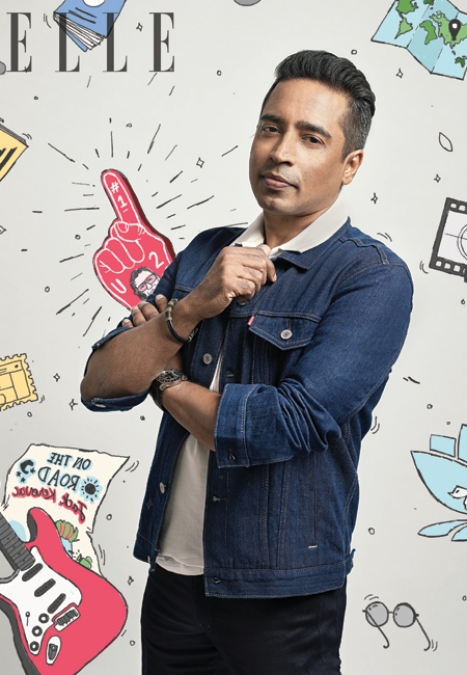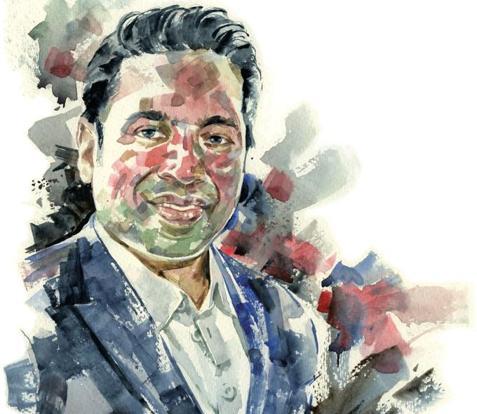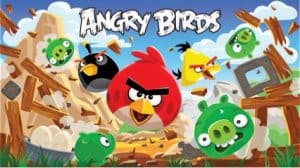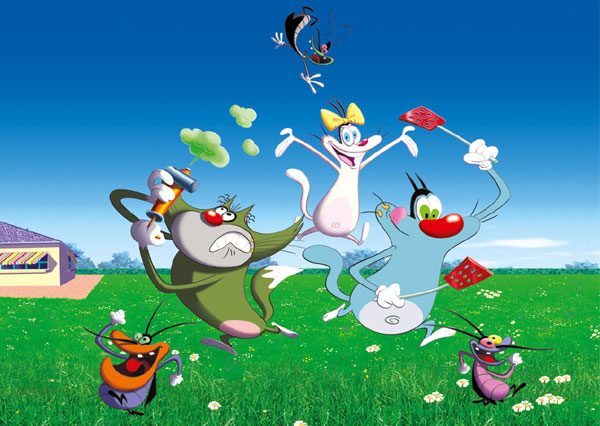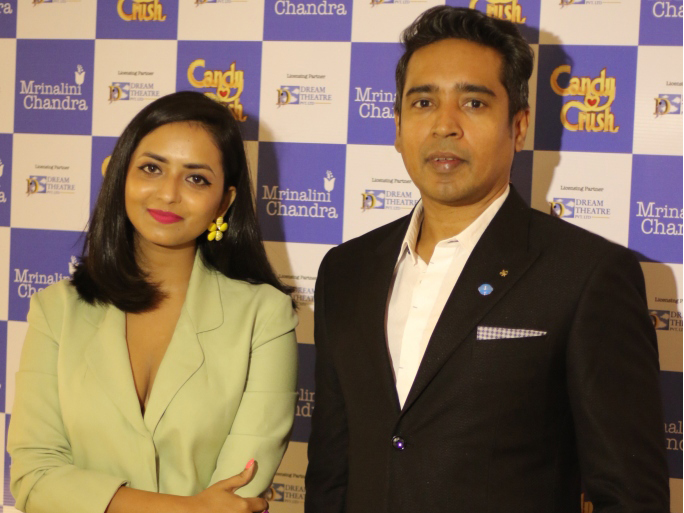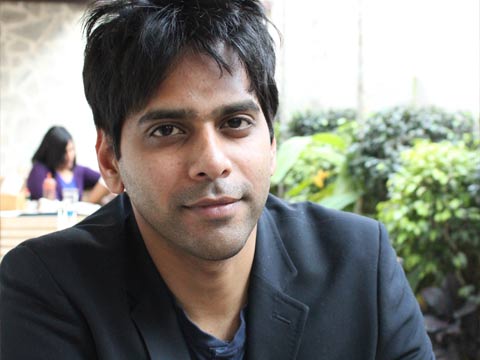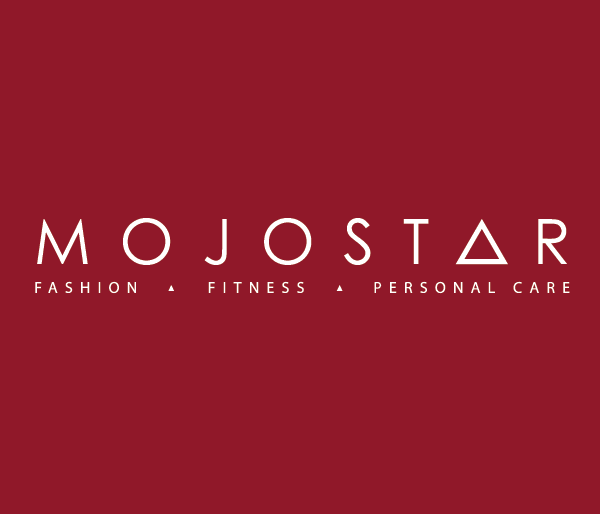
No matter how large, change often starts with small steps: like democratising a field that’s traditionally considered high culture, fighting for equal rights, promoting local textile industries, or even urging us to rethink how our cities are planned.
From fashion and technology, to the arts and social entrepreneurship, Neville Bhandara finds 12 powerhouses who are at the forefront of major shifts in their fields, and have used their talent and determination to become the role models we need.
DARSHAN MEHTA

TACKLING FAILURE: “Don’t aggrandise failure. I’m not saying don’t be ambitious, but learn to put it in context. Find the energy to pull yourself up and live to fight another day. There’s a phrase I like, ‘You don’t fall on the same banana skin again. You fall on another one.’ Remember that.”
WORDS OF WISDOM: “Knowing a little about a lot is a very dangerous place to be. You’d rather know a lot about little. And learn to enjoy what you do, rather than look to do what you enjoy. What you do in your personal life and what you do in your professional life are very different.”
All clothing and accessories, Mehta’s own.
Photograph: Colston Julian
Hair and make-up: Jean Claude Biguine
Assisted by: Ishani Desai (Styling)
RAJAN ANANDAN

A BOOK THAT CHANGED HIS LIFE: “Outliers by Malcolm Gladwell.”
DEALING WITH CRITICISM: “Feedback is a gift. Don’t think of it as criticism, but as constructive advice. Be open to it, and try to improve. If there are things that you need to do differently, be proactive. It will only take you further.”
TACKLING FAILURE: “I have failed more than I have succeeded. It’s important to learn from it, and move on. Keep getting up and going.”
All clothing and accessories, Anandan’s own.
Photograph: Abhishek Bali
Hair and make-up: Neu Salon
Assisted by: Tejaswini Sinha, Nayan Srivastava (Styling)
ROHAN VAZIRALLI

WORDS OF WISDOM: “Respect competition. Whether it’s a mass or prestige brand, someone has spent hours putting it together. They deserve a pat on the back and as much help as they want — and I’m happy to do that.”
TACKLING FAILURE: “Sometimes, you’ve got to have the vision to stay with a brand even if it looks like it’s not gaining traction. You’ve got to put your head down, stay focused and believe in your vision — and your team.”
— Mamta Mody
All clothing and accessories, Vaziralli’s own.
Photograph: Colston Julian
Hair and make-up: Jean Claude Biguine
Assisted by: Pujarini Ghosh (Styling)
BUNTY SAJDEH

WORDS OF WISDOM: “Always under commit, and over deliver.”
CAREER ICONS: “Mark McCormack, founder of IMG. Ari Emanuel, founder of WME (Ari Gold’s character from Entourage is based on him). And Steve Miller, one of the founding employees of Nike, who now runs a billion-dollar fund with Andre Agassi and Steffi Graf.”
THE BOOK THAT CHANGED HIS LIFE: “What They Don’t Teach You At Harvard Business School by Mark McCormack.”
On Bunty: Cotton polo T-shirt, Rs 4,900,Tommy Hilfiger. Jeans, price on request, Versace at The Collective. Denim jacket, Rs 10,000, GAS. Metal watch, Sajdeh’s own.
Photograph: Colston Julian
Hair and make-up: Jean Claude Biguine
Assisted by: Mridu Gupta (Styling)
JASPREET CHANDOK

BEST PIECE OF CAREER ADVICE: “Every job is a dead end if you’re not working to expand your role and responsibilities, and widen your scope. And remember that no matter how smart you think you are, you will eventually be judged by your actions. So, do right by yourself and those around you.”
WORDS OF WISDOM: “Find your centre. Mine is my family. Everything I do, I do for them. When you find your centre, it gives you new perspective and makes your choices clear.”
On Jaspreet: Denim shirt, Rs 5,000, Calvin Klein Jeans. Jeans, metal watch; both Chandok’s own.
Photograph: Colston Julian
Assisted by: Mridu Gupta (Styling)
GAURAV MAHAJAN

persist with renewed efforts.”
CAREER ICONS: “Verghese Kurien, the father of the White Revolution.”
WORDS OF WISDOM: “Awareness of your inner self — knowing who you are and what you want to achieve — is essential to lead a fulfilling life. The Japanese concept of Ikigai, the ‘reason for being’, brought me clarity after years of soul searching.”
On Gaurav: Cotton kurta and pants, metal brooch; all prices on request, Raymond.
Photograph: Colston Julian
Hair and make-up: Jean Claude Biguine
Assisted by: Pujarini Ghosh (Styling)
JIGGY GEORGE

CAREER ICONS: “Bono, the lead singer of U2, for using his rock star status to drive change and raise millions of dollars for people living in poverty.”
TACKLING FAILURE: “Fail more than once. Failures are not the end — they are just milestones on the road to success. More importantly, if you’ve put in the effort, don’t be hard on yourself if you fall short.”
A BOOK THAT CHANGED HIS LIFE: “On The Road by Jack Kerouac.”
WORDS OF WISDOM: “Oscar Wilde once said, ‘Be yourself; everyone else is already taken.’ It’s an important and relevant message.”
On Jiggy: Cotton polo T-shirt, Rs 4,762, Scotch & Soda. Jeans, acrylic bracelet, metal watch; all George’s own. Denim jacket, Rs 6,303, Levi’s.
Photograph: Colston Julian
Hair and make-up: Jean Claude Biguine
Assisted by: Ishani Desai (Styling)
KESHAV SURI

WORDS OF WISDOM: “There is permanence in change. You have to learn to evolve all the time.”
DEALING WITH CRITICISM: “I’m from a family of risk-takers, so I’m not going to be one of those people waiting on the sidelines and complaining. I’m going to do something about it, whether it brings me negative feedback or not.”
— Rochelle Pinto
On Keshav: Cotton T-shirt, polyester skirt; both Suri’s own. Denim shirt, Rs 4,889, Calvin Klein Jeans.
Photograph: Colston Julian
Hair and make-up: Jean Claude Biguine
Assisted by: Mridu Gupta (Styling)
ST+ART INDIA

CAREER ICONS: “Artist Jean-Michel Basquiat.”
TACKLING FAILURE: “Life will always throw punches at you, but you have to keep getting up and punching back.”
WORDS OF WISDOM: “Do what you like, and like what you do. Don’t worry about the money, because that will come if you work sincerely and passionately.
From left, on Bahl: Cotton T-shirt, accessories; all Bahl’s own. Jeans, Rs 3,999, Pepe Jeans. Cotton jacket, price on request, H&M. Leather shoes, price on request, adidas Originals. On Nauriyal: Cotton shirt, Rs 2,299, jeans, Rs 3,999; both Pepe Jeans. Leather shoes, price on request, adidas Originals. On Thomas: Cotton shirt, Rs 2,999, Pepe Jeans. Jeans, accessories; all Thomas’s own. Leather shoes, price on request, adidas Originals. On Kureshi: Cotton T-shirt, price on request, H&M. Jeans, Rs 3,999, Pepe Jeans. Leather shoes, price on request, Christian Louboutin. On Ambrogi: Cotton T-shirt, Rs 2,500, denim jacket, Rs 3,000; both Bhane. Jeans, metal earrings; both Ambrogi’s own. Leather shoes, price on request, Christian Louboutin.
Photograph: Shivamm Paathak
Hair and make-up: Neu Salon
Assisted by: Tejaswini Sinha, Nayan Srivastava (Styling)
RESHMA CHAMBERLIN

THE BEST PIECE OF ADVICE: “As a leader, the smartest thing you can do is to truly listen, to your employees, to the market, and to your gut.”
DEALING WITH CRITICISM: “Dwelling on it is not worth the time. Plus, if everyone loves what you’re doing, you’re not really disrupting, are you?”
WORDS OF WISDOM: “Nothing beats good old-fashioned hard work. And learn to embrace change, because the best things happen when you’re open to new challenges.”
On Reshma: All clothing and accessories, Chamberlin’s own.
Photograph: Carley Rudd
Styling: Laura Katherine Sawyier
DIPIKA PRASAD

CAREER ICONS: “Journalist and author Jane Jacobs. She changed how we think about urban planning, and what makes cities thrive. She rose in a male-dominated field, without traditional academic credentials. Yet, so many years later, the principles she first advocated continue to inform urban policy.”
TACKLING FAILURE: “Get a good night’s sleep, and start fresh the next day. Know that it’s always going to be a mixed bag of both good news and bad. I’ve learnt to expect this, and so, I approach things with equanimity.”
DEALING WITH CRITICISM: “I try to be as rational as possible. I try to think about how the criticism fits with what I want to achieve. If it can add value and improve what I do, I embrace it and act on it. When it doesn’t, I let it go.”
On Dipika: All clothing and accessories, Prasad’s own.
Photograph: Nishat Fatima
Hair and make-up: Sandy Artistry
INDER BAJWA

TACKLING FAILURE: “It teaches you to build yourself up again; better, stronger than before.”
A BOOK THAT CHANGED HIS LIFE: “The Monk Who Sold His Ferrari by Robin Sharma.”
WORDS OF WISDOM: “Go slow, and work to maintain your relationships with people.”
On Inder: Cotton T-shirt, Rs 1,400, cotton shirt, Rs 2,200; both Bhane. Jeans, Rs 2,999, H&M.
Photograph: Shivamm Paathak
Hair and make-up: Neu Salon
Assisted by: Tejaswini Sinha and Nayan Srivastava (Styling)
Styling: Divya Gursahani
Illustrations: Priya Dali
Art direction: Mrudul Pathak Kundu and Vidhi Mirpuri
